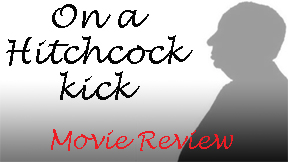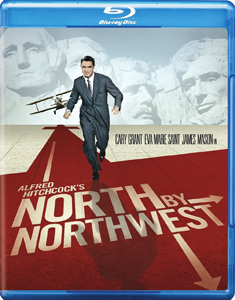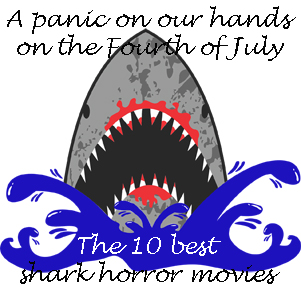Almost without exception, at the end of watching every movie in my “On a Hitchcock Kick” series I’ve thought, “Ah, I can see why critics and fans like this movie.” “North by Northwest” (1959) is a surprise, though – the most different movie from what I assumed it to be in my mind.
While John Q. Public and Jane Q. Critic aren’t wrong to like this movie, which is safely tucked inside the IMDb Top 250 and BFI Top 250, it’s an unorthodox film for one that has mass appeal. Why? Because it’s so funny.
It’s not generally listed as a comedy, and it shouldn’t be – it is an action-spy film laced with comedy, rather than a parody of the genre. But it is worthy of many smiles and chuckles, and if it had kept going for another hour beyond its train-tunnel sexual metaphor joke, I sense that it would’ve become a full-blown laugh-fest. Comedy is the genre that most struggles in mass-appeal lists because individual senses of humor vary so much.

“North by Northwest” (1959)
Director: Alfred Hitchcock
Writer: Ernest Lehman
Stars: Cary Grant, Eva Marie Saint, James Mason
The fun side of spy-actioners
It was too early in the young genre’s history to parody spy-actioners, but writer Ernest Lehman is clearly having a blast with the dialog and director Alfred Hitchcock possibly has never cared less about a plot making sense. It might not be in the comedy genre, but no one can say with a straight face that “NxNW” is a serious film.
“Airplane!” takes the plot of “Zero Hour” and parodies it by exaggerating everything, and if “NxNW” had not been famous, a Zucker Bros. movie could be made from it in the same fashion. (There is one “NxNW” gag in “Wrongfully Accused,” which primarily borrows from “The Fugitive.”)
One can imagine Leslie Nielsen watching the Cary Grant performance here and simply mimicking it before shooting “Police Squad!,” allowing his slightly funnier-looking features to make things funnier.
Femme fatale Eve Kendall (Eva Marie Saint) tells newfound lover Roger Thornhill (Grant) she’s a big girl now. “Yeah, in all the right places,” Roger says suavely (which is how he says every line in the movie). I can easily imagine Nielsen saying the same line to Priscilla Presley. A viewer’s smirk could easily become a laugh.
An early action classic
Hitchcock and Lehman certainly know they are making a funny movie. But they also know they are making an action movie. It’s for this that “NxNW” is more famous – but honestly, the action is less interesting to talk about. Granted, it’s still cool to go behind the scenes and see the trickery of how rear projection is used to create the sequence of the crop duster buzzing Roger with murderous intent. The sequence looks totally real, even today.
Oddly, cinema took longer to make driving look real. After being a passenger with a drunkard in “Notorious” (another progenitor of the action-spy genre, although there’s little action in that one), Grant is now the unwitting drunkard. We get the idea in this rear-projection sequence of swerves and near-misses. But it does not, strictly speaking, look real.
Roger has been plied with bourbon by the baddies in a case of mistaken identity; they think he’s the spy George Kaplan. Rather than the narrative flowing toward a clearing up of this odd situation, either with a chuckle shared by all or with the hero’s tragic death (depending on the tone selected), Lehman and Hitchcock go even zanier.
For instance, Kaplan isn’t even a real person; he’s been made up by The Professor (Leo G. Carroll), the head of the good-guy spy ring – what would be called the Impossible Missions Force if this were an “M:I” picture.
As with most Forties and Fifties spy-actioners, “NxNW” is shy about directly commenting on spy games. It certainly has fun with worldwide governmental espionage (compared to the more sober “Foreign Correspondent” and “Notorious”), and if a viewer is very generous, it could be read as a satire of U.S. spy games, capped by a chase scene that takes place on Mount Rushmore.
A plot Dr. Evil would be proud of
This is undercut, though, by the fact that Hitchcock admired his adoptive country, harbored a healthy fear of authority and had a robust appreciation for good box office. There wasn’t much chance he’d disobey the government’s dictate that none of the chase sequence be directly on the Presidents’ faces.
Despite pulling up short from going over-the-top, “NxNW” slots in as one of Hitchcock’s craziest plots that still results in a good movie. Looking at merely the crop-duster sequence, one could ask “Why don’t the bad guys simply shoot Thornhill?”
At this point in the story, the baddies simply want him dead, and of course they want to get away with the killing. After luring him to a desolate Midwestern cornfield, they could easily drive up to him, shoot him, and drive away. In fact, killing him via machine-gun fire from an airplane is much riskier, because now the authorities can trace where that plane came from.
By allowing my thoughts to go down this path, I’ve already given the plot more thought than Hitch and Lehman (guided by Hitch) did. However, it’s clear Hitch does not care about plot logic here, and a case could be made that by being inconsequential, the plot has critical immunity. It’d be like critiquing the plot of a roller-coaster, or a James Bond movie (the first of which came out three years after this).
Instead, “NxNW” is about the witticisms from Roger and Eve, the interposing of humor and high stakes (see also the auction scene that’s equal parts funny, intense and clever), and the propulsive score by Edward Herrmann.
After seeing how lighthearted it is, I am surprised it’s in the Hitchcock Mount Rushmore with “Psycho,” “Vertigo” and “Rear Window.” But if it had the middling ratings like I’d assume, I’d be championing “North by Northwest” as an underrated action-comedy gem.
IMDb Top 250 trivia
- “North by Northwest” ranks at No. 102 on the list with an 8.3 rating, putting it at No. 3 among Hitchcock films, mere percentage points ahead of the 1958’s “Vertigo” (No. 103, 8.3). “Vertigo” has far more votes cast, though, suggesting that it’s the more watched film today.
- It’s Grant’s highest-rated film, and the only one in the Top 250. Among his other Hitchcock collaborations, “Notorious” comes close to the list with a 7.9; “To Catch a Thief” rates a 7.4 and “Suspicion” tallies a 7.3.
- One other film on the list has a direction in its title: 1968’s “Once Upon a Time in the West” (No. 51, 8.5).
RFMC’s Alfred Hitchcock series reviews works by the Master of Suspense, plus remakes and source material. Click here to visit our Hitchcock Zone.


